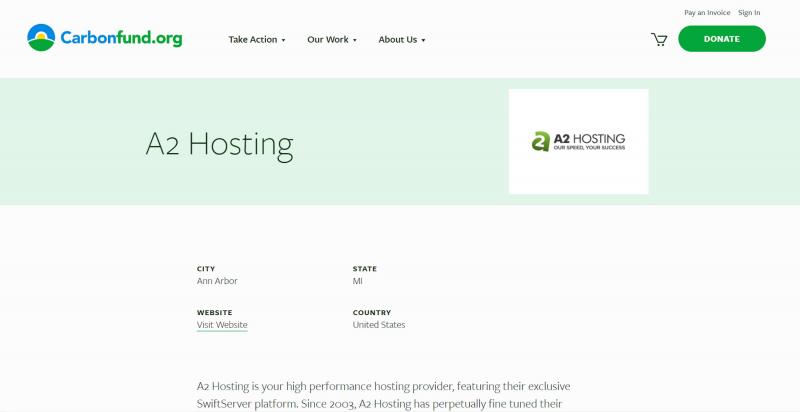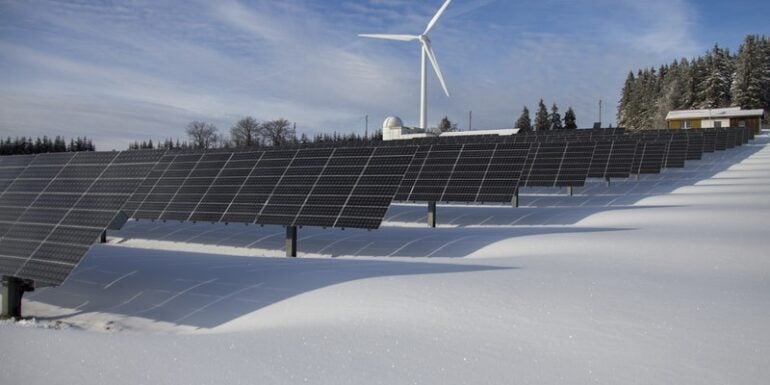- Oct 06, 2020
 0
0- by A2 Marketing Team
With the increasing awareness around global warming, green technology has been a hot topic in recent years. The amount of energy needed to keep web hosting data centers running is often noted as increasing. This is why green web hosting has become a prominent subject of discussion.
A green web host is typically proactive about curbing the industry’s eco-problem. However, choosing the right provider can be a little tricky. As much as you care about the environment, you can easily get confused about what features matter most when it comes to green web hosting.
In this article, we’ll first discuss what green web hosting is and why it’s important. We’ll then show you the most important features to consider when choosing a green web host. Let’s get to it!
How Green Web Hosting Affects the Environment
When you purchase web hosting, it naturally requires energy to provide the service. In order to keep your website running, web hosting providers have to rely on servers. They work around the clock, and as such require a lot of energy to maintain a high uptime.
Of course, servers generate heat, only in a far larger proportion. So, considering that they work 24/7 and perform heavyweight duties in most cases, web hosting servers also demand very powerful cooling systems.
In essence, data centers are a major consumer of electricity worldwide. Not only do hosting servers need power but their cooling systems are also equally demanding. Presently, data centers already use approximately 205 terawatt-hours (TWh) of electricity annually. This is set to even increase as forecasts predict ICT energy consumption quotas can go from 1% of global electricity demand to as high as 21% in the worst-case scenario.
With such a high demand for electricity, it is clear that generating this amount of power with non-renewable fossil fuels will definitely pose a huge threat to our environment. This is why every web hosting service provider and consumer should consider green web hosting a priority.
An Introduction to Green Web Hosting and Why It’s Important
Green web hosting is simply any type of internet hosting that relies on eco-friendly technologies and initiatives to reduce the impact the industry is having on our planet. While it’s difficult to generate power for data centers using renewable forms of energy only, green web hosts achieve their goals through other means.
At the moment, the major focus of green web hosting is to compensate for the industry’s carbon footprint. Though some vendors use the ‘green web host’ tag as a marketing stunt, others embark on initiatives to help look out for the environment.
However, it’s important to note that even the largest internet hosts only take up very small portions of data centers. Therefore, it is practically impossible for them to dictate how these data centers should generate their energy. In other words, web hosting companies have to contribute to the health of the environment through other means.
How to Choose A Green Web Host (4 Top Features to Look Out for)
In this section, we’ll show you the different methods providers use to achieve green hosting. We’ll now discuss four important features to consider when choosing a green host.
1. Renewable Energy Certificates (RECs) and Carbon Offset Certificates (VERs)
Arguably, the most tangible proof of a vendor’s claim to green web hosting are RECs and VERs. A Renewable Energy Certificate (REC) proves a web hosting provider generates its power using renewable energy sources.
When a company purchases a REC, it is guaranteed that the renewable energy supplier will generate 1Megawatt-hour (MWh) of electricity on their behalf. This electricity is then sent to the main grid that powers the data center.
VERs take a different approach. Instead of guaranteeing green energy generation, carbon offset certificates certify that the carbon emissions from data centers are offset. Typically, a VER contains information about the amount of carbon that has been offset by the company purchasing it.
2. Energy-Efficient Hardware and Data Centers
As technology improves, computer hardware keeps getting better too. Modern device storage devices are now significantly more energy-efficient. For example, a Solid-State Drive (SSD) – now the industry standard – is known to consume less power than the moving parts of a Hard Disk Drive (HDD).
Other important hardware components that can be used to improve energy efficiency include better DC voltage regulators and more effective power-saving technology.
In terms of cooling, power-efficient Computer Room Air Conditioning (CRAC) fan units with varying speeds are also very instrumental. Since server loads fluctuate consistently, Variable-Speed Drives (VSDs) can also go a long way in conserving energy.
3. Energy-Efficient Software
Once you have the right hardware in place, you must pay close attention to software too. Light energy-efficient software decides how efficiently hardware components consume energy. Smart software applications have efficient power saver modes, and employ best practices such as data compression, deduplication, and storage tiering.
These practices help to conserve space on storage devices. Data compression limits the amount of data stored and as a result, less traffic is transmitted as well. On the other hand, ‘deduplication’ simply eliminates irrelevant copies of files. Storage tiering is a technique used to migrate older, less frequently accessed content to low-performance drives.
In essence, the less memory consumed and traffic transmitted, the less energy required to power the devices.
4. Support for Climate Change Initiatives
The best green web hosts go the extra mile by completely adopting a green technology philosophy and supporting programs dedicated to the cause. Environmental preservation is a campaign that requires funding and a lot of awareness, and there are organizations dedicated to this. Good examples are Carbonfund.org and Bonneville.

By supporting these initiatives, a web host automatically joins the bigger picture of the campaign for our planet’s preservation. They can also encourage eco-friendly habits among their employees. These habits may include reducing trash (opting for reusable utensils), planting trees, and using carbon-free forms of transportation when possible.
Conclusion
No doubt, a good number of vendors out there claim to be looking out for the environment. However, as a user looking for the right green web host, you’ll need to cut through all the advertising gimmicks to make the right choice.
So, once again, here are the features to look out for when choosing a green web host:
- Renewable Energy Certificates (RECs) and Carbon Offset Certificates (VERs)
- Energy-efficient hardware and data centers
- Energy-efficient software
- Support for climate change initiatives
Image credit: Pixabay.












